Top Fort in Rajasthan
You're looking at 7 fort scattered across rajasthan that tell stories spanning centuries. Each one follows its own architectural tradition, with some dating back over a thousand years. We've worked with ASI archaeologists, local historians, and conservation teams to document these sites properly—not just taking pretty pictures, but understanding what makes them tick. 6 of these have UNESCO World Heritage status, which means they're recognized globally as irreplaceable pieces of human history. From royal commissions to community-built structures, they shape how we see rajasthan today. You'll find 3D scans, floor plans, and research here—but more importantly, you'll understand why these places matter.
7 heritage sites with comprehensive documentation
Detailed architectural surveys and measurements
High-resolution photography and documentation
Average documentation completion: 80%
Total Sites:7
UNESCO Sites:6
Top Style:Mughal/Rajput Military. Blend of Hindu and Islamic elements. (1)
Top Period:Rajput Period (7)
Avg. Documentation:80%
Historical Context
Here's the thing about rajasthan—it's always been a meeting point. For centuries, kings, religious leaders, and wealthy merchants competed to build the most impressive fort. Not just for show, though that was part of it. These buildings were statements: "We're powerful," "We're pious," or "We've got money and taste." Different rulers brought different ideas—new techniques from Persia, decorative styles from Central Asia, engineering solutions nobody had tried before. What's fascinating is how local builders adapted these ideas. They'd take a Persian arch design but execute it with Indian craftsmanship and local stone. Archaeologists have found inscriptions and artifacts at these 7 sites that reveal surprising connections: trade routes linking rajasthan, political marriages between dynasties, religious syncretism that official histories often ignored. These aren't just old buildings—they're archives made of stone and mortar.
Architectural Significance
So what makes these 7 fort architecturally interesting? Look closely and you will see they solved problems in clever ways. Builders worked with what they had—local stone, brick, sometimes timber, and always lime mortar for load distribution and weatherproofing. The corbelling on some of these? Insane precision without modern tools. The dome construction techniques? They were doing stress calculations in their heads centuries before engineering textbooks existed. But it is not all about structure. Walk into any of these sites and you will see walls covered in stories—literal ones, carved in stone. Deities, kings, battles, everyday life, geometric patterns that make your eyes do funny things. Some have calligraphy so intricate it is basically frozen music. Recent 3D scans have shown us things nobody noticed in person: original paint traces, hidden repair work from centuries ago, even how earlier damage was patched. It is like having X-ray vision into history.
Conservation & Preservation
Keeping 7 ancient fort standing in rajasthan is hard work. Protection status varies, but they all need it—legal backing means builders cannot just knock them down for parking lots. But paperwork does not stop rain, moss, earthquakes, or tourists who think it is okay to carve their names into 800-year-old walls. Conservationists are constantly battling nature (water seeping into cracks, plants growing where they should not) and people (too many visitors, nearby construction, general neglect). The work being done includes shoring up walls that are leaning, cleaning surfaces without damaging them, rebuilding collapsed sections using the same techniques as the original builders, managing vegetation, fixing drainage. Why all the 3D scanning and documentation? Two reasons: if something collapses, we have perfect records to rebuild from. And by comparing scans over years, we can spot problems before they become disasters.
Visitor Information
Want to actually visit these 7 fort? Here is what you need to know. rajasthan is pretty well-connected—flights, trains, buses all work. Most are near towns with decent hotels and food options, but double-check before booking. Best time? October to March. You do not want to be exploring ancient monuments in May when it is 45°C in the shade. Entry fees are usually ₹25-40 for Indians, ₹250-600 for foreigners at ASI sites. Some smaller places are free. Photography? Usually yes for personal use, but leave the tripod in your car unless you want arguments with guards. And definitely no flash around old paintings. Budget 2-3 hours per major site if you actually want to see things, not just tick boxes. Local guides can be hit or miss—good ones are worth every rupee, bad ones just parrot Wikipedia. Basic etiquette: dress appropriately (especially at religious sites), do not touch the walls, and remember people still worship at many of these places.
Key Facts & Statistics
•
Total documented heritage sites: 7
•
UNESCO World Heritage Sites: 6
Source: UNESCO World Heritage Centre
•
Fort: 7 sites
•
Mughal/Rajput Military. Blend of Hindu and Islamic elements. architectural style: 1 sites
•
Rajput Military Architecture + Fortification + Defensive strength and grandeur architectural style: 1 sites
•
Rajput Military Hill Fort architectural style: 1 sites
•
Indo-Islamic; Fusion; Blends Hindu and Islamic elements. architectural style: 1 sites
•
Rajput military hill architecture. Defensive. Thick walls, strategic location. architectural style: 1 sites
•
Rajput Period period construction: 7 sites
•
Average documentation completion score: 80%
•
rajasthan ranks among India's top heritage destinations with 7 documented sites
•
Featured flagship heritage sites: 7
•
Comprehensive digital archiving preserves heritage for future generations
•
Comprehensive digital archiving preserves heritage for future generations
•
Comprehensive digital archiving preserves heritage for future generations
•
Comprehensive digital archiving preserves heritage for future generations
•
Comprehensive digital archiving preserves heritage for future generations
•
Comprehensive digital archiving preserves heritage for future generations
•
Comprehensive digital archiving preserves heritage for future generations
•
Comprehensive digital archiving preserves heritage for future generations
Frequently Asked Questions
How many fort are documented in rajasthan?
This collection includes 7 documented fort in rajasthan. Of these, 6 are UNESCO World Heritage Sites. Each site has comprehensive documentation including photos, floor plans, and historical research.
What is the best time to visit fort in rajasthan?
October to March is ideal for visiting fort in rajasthan, with pleasant temperatures (15-25°C) and minimal rainfall. Avoid May-June (peak summer) and July-September (monsoon season). Major festivals also offer unique cultural experiences. Check individual site pages for specific visiting hours and seasonal closures.
What are the entry fees for fort?
ASI-protected monuments charge ₹25-₹40 for Indian nationals and ₹250-₹600 for foreign tourists. State-protected sites often have lower or no entry fees. Many temples and religious sites are free. Children under 15 typically enter free. Still photography is usually included; video may require additional permits.
Are photography and videography allowed at heritage sites?
Still photography for personal use is generally permitted at most heritage sites. Tripods, flash photography, and commercial filming usually require special permissions. Some sites restrict photography of murals, sculptures, or sanctums. Drones are prohibited without explicit authorization. Always respect signage and guidelines at individual monuments.
How do I reach fort in rajasthan?
rajasthan is well-connected by air, rail, and road. Major cities have airports with domestic and international flights. Indian Railways operates extensive networks. State and private buses connect smaller towns. Most heritage sites are accessible by taxi, auto-rickshaw, or rental vehicles. Plan 2-3 hours per major monument.
Are these heritage sites wheelchair accessible?
Accessibility varies significantly. Major UNESCO sites and recently renovated monuments often have ramps and accessible facilities. However, many historical structures have steps, uneven surfaces, and narrow passages. Contact site authorities in advance for specific accessibility information. Our site pages indicate known accessibility features where available.
Are guided tours available at fort?
Licensed guides are available at most major heritage sites, typically charging ₹200-₹500 for 1-2 hour tours. ASI-approved guides provide historical and architectural insights. Audio guides are available at select UNESCO sites. Our platform offers virtual tours and detailed documentation for major monuments.
What is the conservation status of these fort?
Many sites are protected under heritage conservation laws. Active conservation includes structural stabilization, surface cleaning, vegetation control, and drainage management. Digital documentation helps monitor deterioration. Ongoing surveys track condition changes for evidence-based interventions.
What documentation is available for these heritage sites?
Each site includes high-resolution photography, architectural measurements, historical research, and expert annotations. Documentation averages 80% completion.
How much time should I allocate for visiting?
Plan 2-3 hours for major monuments to appreciate architectural details and explore grounds. Smaller sites may require 30-60 minutes. Multi-site itineraries should allocate travel time. Early morning or late afternoon visits offer better lighting for photography and fewer crowds. Check individual site pages for recommended visiting durations.
What is the cultural significance of these fort?
These monuments represent India's diverse cultural heritage, reflecting centuries of architectural innovation, religious traditions, and artistic excellence. They serve as living links to historical societies, preserving knowledge about construction techniques, social structures, and cultural values. Many sites remain active centers of worship and community gathering.
What other attractions are near these heritage sites?
rajasthan offers diverse tourism experiences beyond heritage monuments. Explore local museums, craft villages, nature reserves, and cultural festivals. Many heritage sites are clustered in historic towns with traditional markets and cuisine. Our site pages include nearby attraction recommendations and multi-day itinerary suggestions.
How can I practice responsible heritage tourism?
Respect site rules including photography restrictions and designated pathways. Don't touch sculptures, murals, or walls. Dispose waste properly. Hire local guides to support communities. Avoid visiting during restoration work. Learn about cultural contexts before visiting. Report damage to authorities. Your responsible behavior helps preserve heritage for future generations.
References & Sources
[4]
📍
StateRajasthan
What is Fort in rajasthan?
You're looking at 7 fort scattered across rajasthan that tell stories spanning centuries. Each one follows its own architectural tradition, with some dating back over a thousand years. We've worked with ASI archaeologists, local historians, and conservation teams to document these sites properly—not just taking pretty pictures, but understanding what makes them tick. 6 of these have UNESCO World Heritage status, which means they're recognized globally as irreplaceable pieces of human history. From royal commissions to community-built structures, they shape how we see rajasthan today. You'll find 3D scans, floor plans, and research here—but more importantly, you'll understand why these places matter.
Total Count:
0 sitesRegion:
rajasthanType:
FortStatus:
Heritage ProtectedKey Characteristics
- 1Massive defensive walls and bastions
- 2Strategic hilltop or water-bound location
- 3Multiple fortified gateways
- 4Interior palaces and administrative buildings
- 5Water management systems
- 6Military architecture and war tactics
Distribution by State
| 📍Rajasthan | 7 sites |
7
Total Sites
6
UNESCO Sites
7
Featured
7 Sites Found
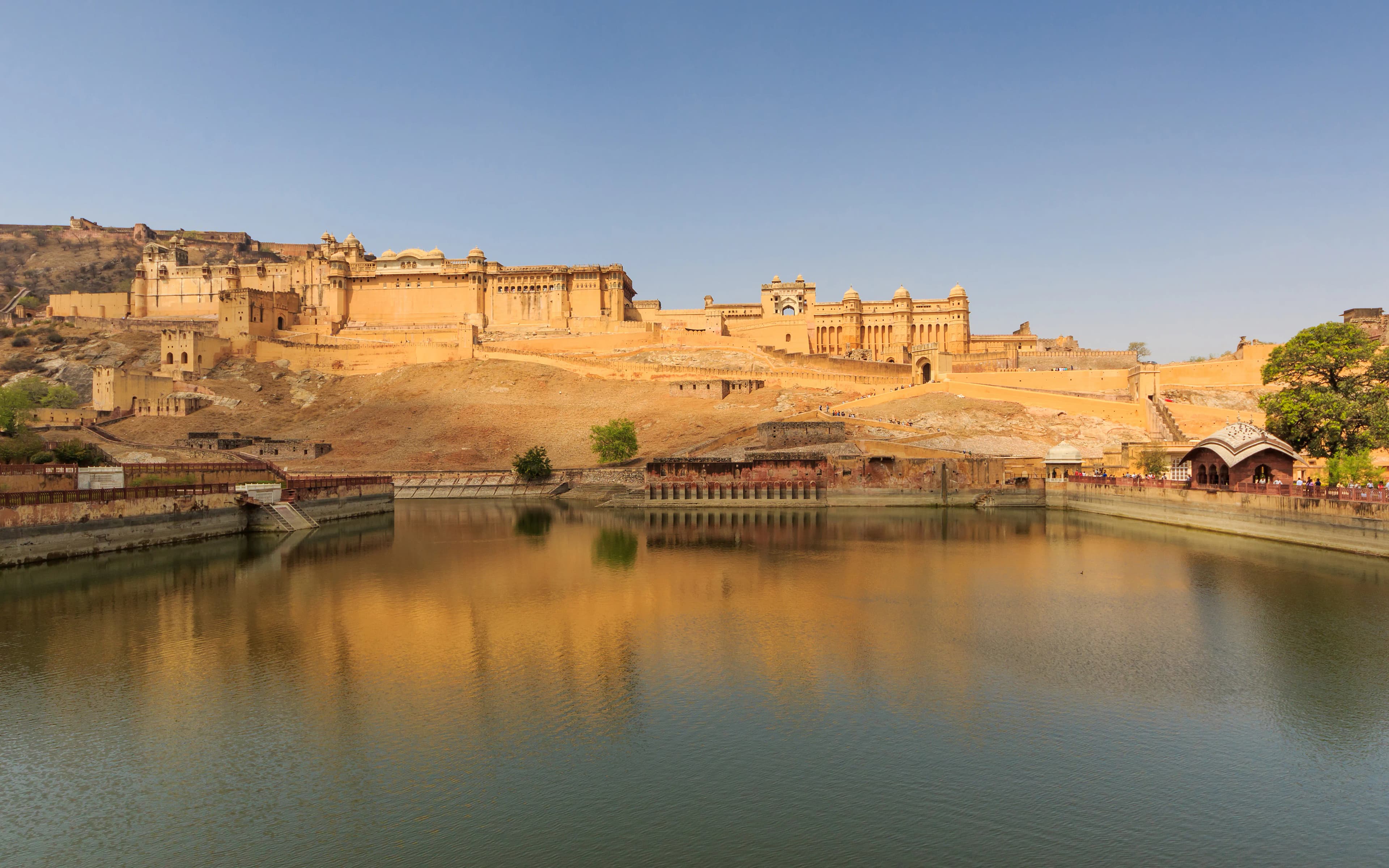
UNESCO
Featured
80% Documented
Devisinghpura, Jaipur, Amer (302001), Rajasthan, India, Rajasthan
The ochre walls of Amber Fort shimmered under the Rajasthani sun, a mirage-like vision rising from the dusty Aravalli hills. Having explored countless forts across North India, I thought I was prepared for Amber, but its sheer grandeur and intricate beauty silenced even my seasoned traveler’s heart. My ascent wasn't on elephant-back, the traditional tourist route, but rather by jeep, a bumpy ride that offered panoramic views of the sprawling complex below. This perspective allowed me to appreciate the fort’s strategic location, guarding the old Jaipur city with its formidable ramparts. Entering through the Suraj Pol (Sun Gate), I was immediately struck by the fort's layered architecture, a testament to the Rajput rulers who expanded and embellished it over centuries. The courtyard, a vast expanse of sandstone, buzzed with activity even in the midday heat. Guides recounted tales of Rajput valor, tourists snapped selfies against the backdrop of ornate arches, and the echoes of centuries past seemed to whisper through the breeze. My exploration began with the Diwan-i-Am, the Hall of Public Audience. The intricate carvings on the pillars, depicting elephants and floral motifs, were a feast for the eyes. I could almost imagine the Maharaja holding court here, addressing his subjects from the raised platform. The sheer scale of the courtyard, coupled with the delicate artistry of the carvings, created a powerful juxtaposition of strength and refinement. From there, I moved to the Diwan-i-Khas, the Hall of Private Audience. Here, the opulence was even more pronounced. The walls were inlaid with intricate mosaics of glass and precious stones, reflecting the sunlight in a dazzling display. The famed Sheesh Mahal, or Mirror Palace, was a breathtaking spectacle. Even the faintest flicker of a candle is said to illuminate the entire hall, a testament to the ingenious design and craftsmanship. I spent a considerable amount of time here, captivated by the shimmering surfaces and the stories they held. The Sukh Niwas, or Hall of Pleasure, offered a welcome respite from the midday sun. An ingenious system of channels once carried cool water through the hall, creating a natural air conditioning system. The intricate latticework screens allowed for privacy while permitting the passage of the cooling breeze. It was easy to imagine the royal family seeking refuge here during the scorching summer months. Ascending further, I reached the zenana, the women's quarters. Here, the architecture shifted subtly. While still ornate, there was a greater emphasis on privacy and seclusion. Interconnected courtyards, screened balconies, and hidden passages offered glimpses into the lives of the royal women, their world both luxurious and confined. Looking out from the highest point of the fort, the panoramic view of Maota Lake and the surrounding hills was simply stunning. The city of Jaipur sprawled in the distance, a vibrant tapestry of colors and sounds. From this vantage point, I could truly appreciate the strategic brilliance of Amber’s location. My visit to Amber Fort was more than just a sightseeing trip; it was a journey through time. The fort’s architecture, its intricate details, and its commanding presence spoke volumes about the power and artistry of the Rajput rulers. As I descended, leaving the ochre walls behind, I carried with me not just photographs and memories, but a deeper understanding of Rajasthan's rich history and cultural heritage. Amber Fort is not just a fort; it's a living testament to a bygone era, a place where history whispers from every stone.
Fort
Rajput Period

UNESCO
Featured
80% Documented
Fort Road, Chittorgarh, Chittorgarh (312001), Rajasthan, India, Rajasthan
The wind whips around me, carrying whispers of history as I stand atop Chittorgarh Fort, the largest fort in India. Spread across 700 acres, this colossal structure isn't just a fort; it's a testament to Rajput valour, a canvas painted with tales of sacrifice and resilience. Having explored countless forts and palaces across Rajasthan, I can confidently say Chittorgarh holds a unique, almost melancholic beauty. The sheer scale of the fort is overwhelming. Reaching the main gate, the Ram Pol, after navigating a winding road, feels like stepping back in centuries. Seven massive gates guard the fort, each narrating a chapter of its tumultuous past. The intricate carvings on these gates, depicting scenes of battles and processions, are remarkably preserved, offering a glimpse into the artistic sensibilities of the era. Within the fort walls, a city unfolds. The Vijay Stambh, or Tower of Victory, stands tall, a magnificent nine-story structure celebrating Maharana Kumbha's victory over the Sultan of Malwa in 1440. The intricate carvings covering the tower, depicting Hindu deities and mythological scenes, are a marvel of craftsmanship. I spent a considerable amount of time circling the tower, craning my neck to absorb the sheer detail. The climb to the top, though steep, is rewarding, offering panoramic views of the surrounding plains and the sprawling fort complex. A short distance away stands the Kirti Stambh, a 22-meter high tower dedicated to Jain Tirthankara Adinath. The contrast between the two towers is striking. While the Vijay Stambh is a celebration of military might, the Kirti Stambh exudes a sense of quiet spiritual strength. The delicate carvings on the Kirti Stambh, showcasing Jain philosophies and figures, are a testament to the religious harmony that once existed within these walls. The Rana Kumbha Palace, a sprawling complex of courtyards, chambers, and terraces, offers a glimpse into the lives of the Mewar rulers. The palace, though partially in ruins, still retains its grandeur. I wandered through the echoing halls, imagining the bustling court life, the strategic discussions, and the royal ceremonies that once took place within these walls. The intricate jali work, the remnants of vibrant frescoes, and the strategically placed balconies offer a tangible connection to the past. The poignant story of Rani Padmini's Jauhar resonates deeply within the walls of Chittorgarh. The Padmini Palace, overlooking a serene lotus pool, is where the queen and other women are said to have performed self-immolation to protect their honour from the invading Alauddin Khilji. Standing at the edge of the pool, a palpable sense of sorrow hangs in the air. It's a stark reminder of the sacrifices made to defend this fort. Beyond the grand structures, the fort holds smaller, quieter treasures. The Kalika Mata Temple, originally a Sun Temple, and the Meera Temple, dedicated to the devotee-poetess Meera Bai, offer glimpses into the religious diversity within the fort. I found myself drawn to these smaller shrines, appreciating the quiet serenity they offered amidst the grandeur of the fort. Exploring Chittorgarh Fort is not just a sightseeing experience; it's an immersion in history. It's a journey through time, a walk amidst the echoes of battles, sacrifices, and artistic brilliance. The fort stands as a powerful symbol of Rajput pride and resilience, a reminder of a time when honour and valour were paramount. As I descend from the fort, the setting sun casting long shadows across the plains, I carry with me not just photographs and memories, but a deeper understanding of Rajasthan's rich and complex history.
Fort
Rajput Period
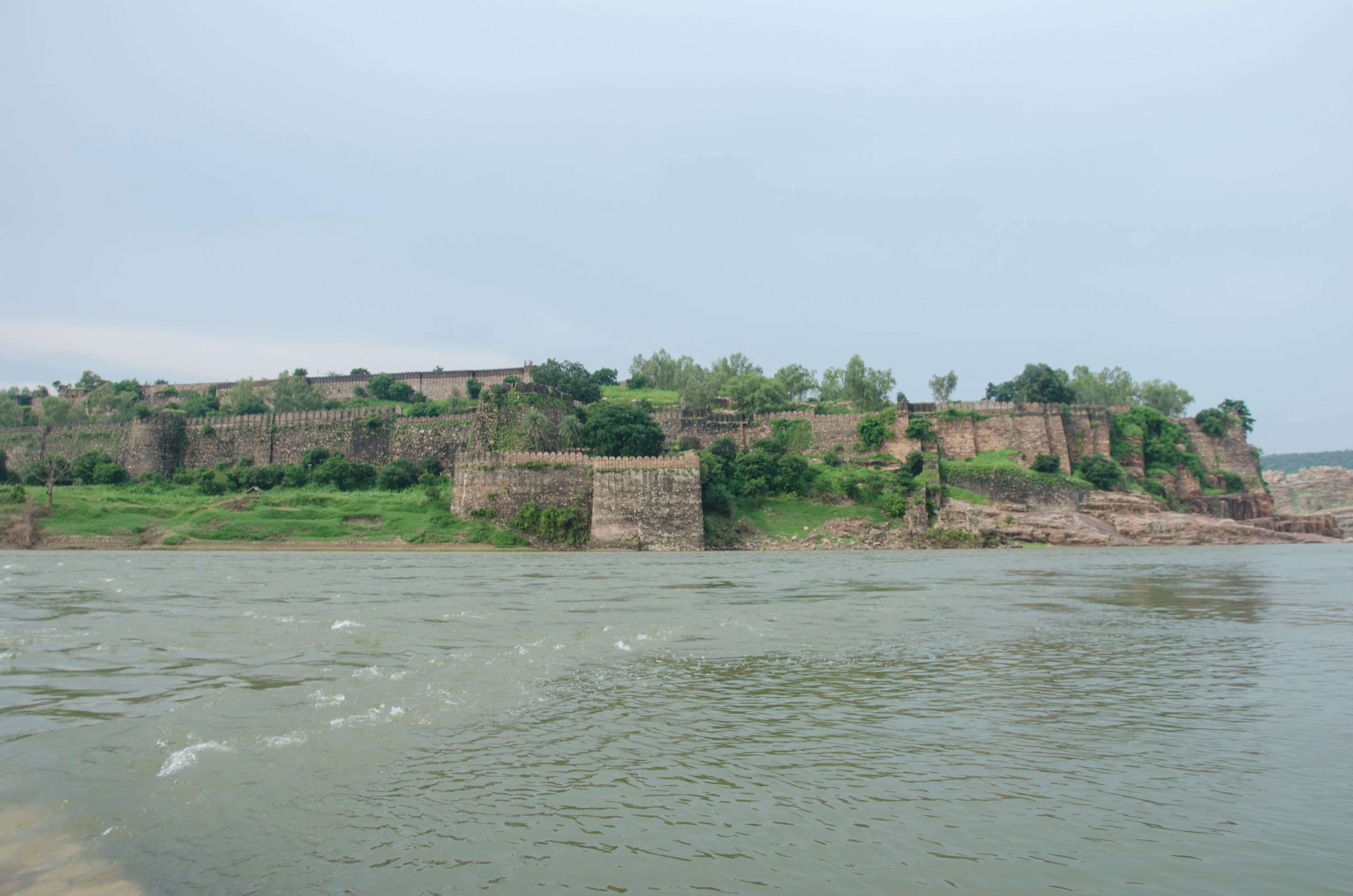
UNESCO
Featured
80% Documented
Gagron, Jhalawar, Jhalawar (326023), Rajasthan, India, Rajasthan
The imposing silhouette of Gagron Fort, rising from the confluence of the Ahu and Kali Sindh rivers, was a sight that resonated with a power far beyond its physical scale. Having spent years immersed in the Dravidian architecture of South India, I arrived at this Rajput fortress with a keen eye for comparison and a thirst to understand a different architectural idiom. The stark contrast between the granite behemoths of my homeland and this sandstone sentinel was immediately apparent, yet the underlying principles of fortification and strategic placement felt strangely familiar. Gagron, a UNESCO World Heritage Site, is one of the few hill and water forts in Rajasthan. The unique 'jal durg' classification, meaning water fort, is immediately justified by its position. Unlike the moat-encircled forts I’m accustomed to seeing in the South, Gagron is virtually embraced by the rivers on three sides, creating a natural, formidable barrier. This inherent strength is further enhanced by massive sandstone walls that rise directly from the water, their warm hues glowing in the afternoon sun. Entering through the imposing Nahar Pol gate, I was struck by the intricate carvings adorning the archway. While less ornate than the Gopurams of South Indian temples, the detailed depictions of deities and floral motifs spoke volumes about the Rajput patronage of the arts. The fort's layout, a labyrinthine network of narrow lanes, palaces, temples, and reservoirs, unfolded before me like a medieval urban plan. The steep inclines and strategically placed gates clearly demonstrated a focus on defense, reminding me of the intricate fortifications of Gingee Fort back home. The architecture within the fort displayed a fascinating blend of Rajput military architecture and subtle Mughal influences. The Kirttistambh, a victory tower, stood tall, its intricate carvings a testament to Rajput craftsmanship. It reminded me of the Vijayanagara period pillars, though the stylistic differences were pronounced. The Rani Mahal palace, overlooking the confluence of the rivers, offered breathtaking views and a glimpse into the lives of the royalty who once inhabited this fortress. The delicate jali work, allowing for ventilation and veiled views, was a feature I found echoed in many South Indian palaces, though the geometric patterns here were distinctly Rajasthani. One of the most striking features of Gagron Fort is its water management system. The numerous baoris, or stepwells, within the fort complex are marvels of engineering. These deep, multi-storied structures, designed to collect and store rainwater, showcase an understanding of water conservation that was crucial in this arid region. The sophistication of these systems resonated deeply with me, having witnessed similar ingenuity in the ancient tank irrigation systems of Tamil Nadu. Exploring the fort, I came across several temples dedicated to various Hindu deities. The architecture of these temples, while smaller in scale, bore the hallmarks of Rajput temple design, with their shikharas and mandapas. The coexistence of these religious structures within the fort highlighted the integral role of faith in the lives of the Rajput rulers. This integration of secular and religious architecture is a feature I've often observed in South Indian temple complexes as well. My visit to Gagron Fort was more than just a sightseeing trip; it was a cross-cultural architectural dialogue. It was a testament to the ingenuity and artistry of two distinct yet interconnected building traditions. While the materials, styles, and ornamentation differed significantly, the underlying principles of fortification, water management, and the integration of faith into architecture resonated deeply with my understanding of South Indian heritage. Gagron Fort stands not just as a monument to Rajput valor, but as a powerful reminder of the shared architectural heritage of India.
Fort
Rajput Period
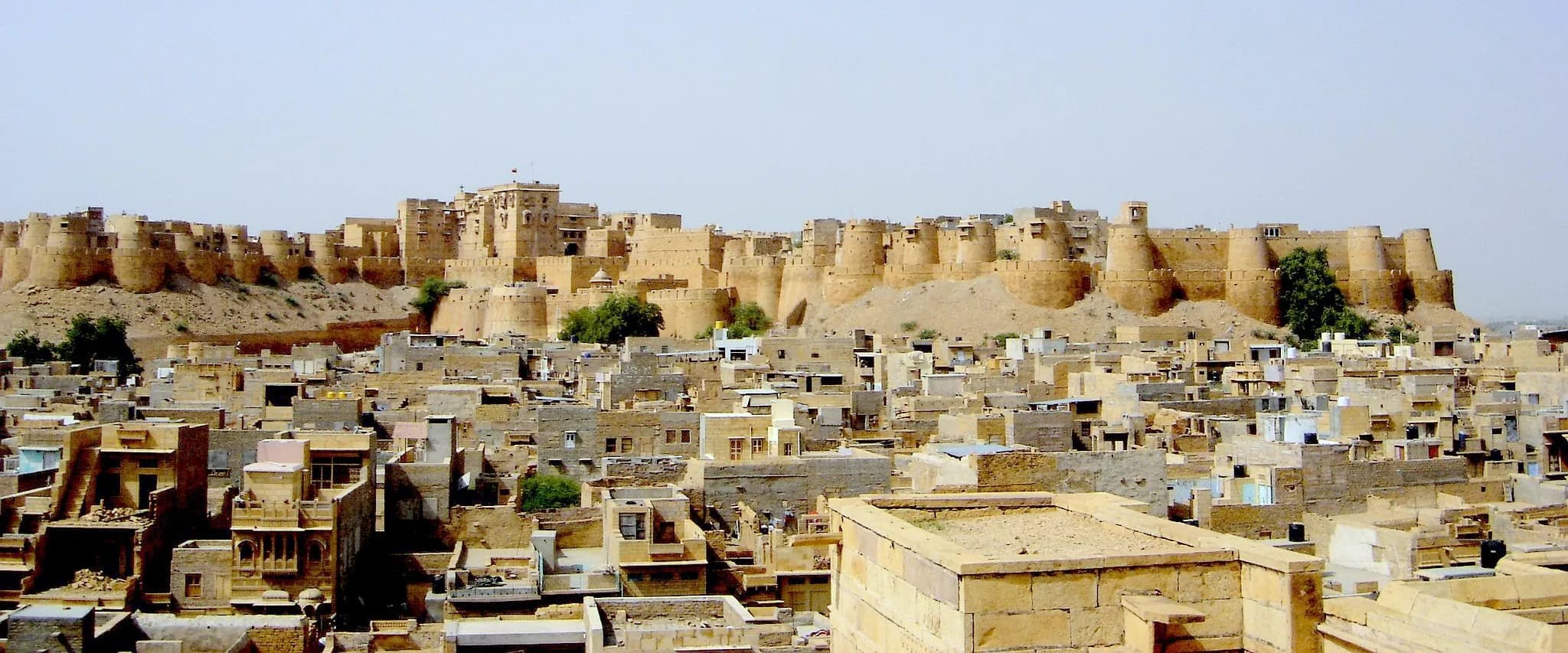
UNESCO
Featured
80% Documented
Fort Road, Jaisalmer, Jaisalmer (345001), Rajasthan, India, Rajasthan
The wind, a constant companion in the Thar Desert, whipped around me as I ascended the winding ramparts of Jaisalmer Fort, a colossal sandstone behemoth rising from the desert itself. It wasn't just a fort; it was a living, breathing city, a testament to Rajputana resilience etched against the vast canvas of the Indian desert. My five-hundredth monument, and it felt like the first, the sheer scale and grandeur eclipsing everything I'd witnessed before. The "Sonar Quila," as it’s locally known, truly lived up to its golden moniker. The late afternoon sun bathed the fort in a warm, honeyed light, highlighting the intricate carvings that adorned every surface. It wasn't the polished, pristine beauty of some restored monuments; this was a beauty born of age and endurance, the sandstone weathered and textured, whispering tales of centuries past. Passing through the Suraj Pol, the main gate, I was immediately struck by the organized chaos within. Narrow, winding lanes, a vibrant tapestry of shops selling textiles, jewelry, and handicrafts, pulsed with life. It was a far cry from the sterile, museum-like atmosphere of some historical sites. Here, history wasn't confined to glass displays; it was lived, breathed, and bargained over. The architecture within the fort was a captivating blend of Rajput and Islamic styles. Jharokhas, the ornate balconies projecting from the haveli facades, offered glimpses into the opulent lives once lived within. I spent hours photographing these intricate details, the delicate latticework, the miniature arches, each a testament to the skill of the artisans who crafted them centuries ago. The Patwon Ki Haveli, a cluster of five interconnected havelis, was particularly striking, its facade a riot of intricate carvings that seemed to defy gravity. Climbing to the topmost ramparts, the city of Jaisalmer unfolded below me, a sea of golden rooftops merging seamlessly with the desert beyond. The panoramic view was breathtaking, the vastness of the landscape emphasizing the fort's strategic importance. I could almost imagine the Rajput warriors, standing on these very ramparts, scanning the horizon for approaching armies. The Jain temples within the fort were another highlight. Their intricate marble carvings, a stark contrast to the rough-hewn sandstone of the fort walls, spoke of a different kind of devotion. The play of light and shadow within the temples created an ethereal atmosphere, transporting me to a realm of quiet contemplation. But it wasn't just the grand architecture or the stunning views that captivated me. It was the people. The shopkeepers, the residents, the children playing in the narrow lanes – they were all part of the fort's living history. I spent time talking to them, listening to their stories, understanding their connection to this ancient place. A chai-wallah recounted tales passed down through generations, while a textile merchant explained the intricate patterns woven into the local fabrics. These interactions, these glimpses into everyday life, added another layer of depth to my understanding of Jaisalmer Fort. As the sun began to set, casting long shadows across the ramparts, I felt a profound sense of connection to this place. Jaisalmer Fort wasn't just a collection of stones and mortar; it was a living organism, a testament to human resilience and artistry. It was a place where history whispered from every corner, where the past and present intertwined seamlessly, creating an experience that transcended the visual and touched the soul. Leaving the fort, I carried with me not just photographs, but memories and stories, woven into the fabric of my own journey as a heritage photographer.
Fort
Rajput Period
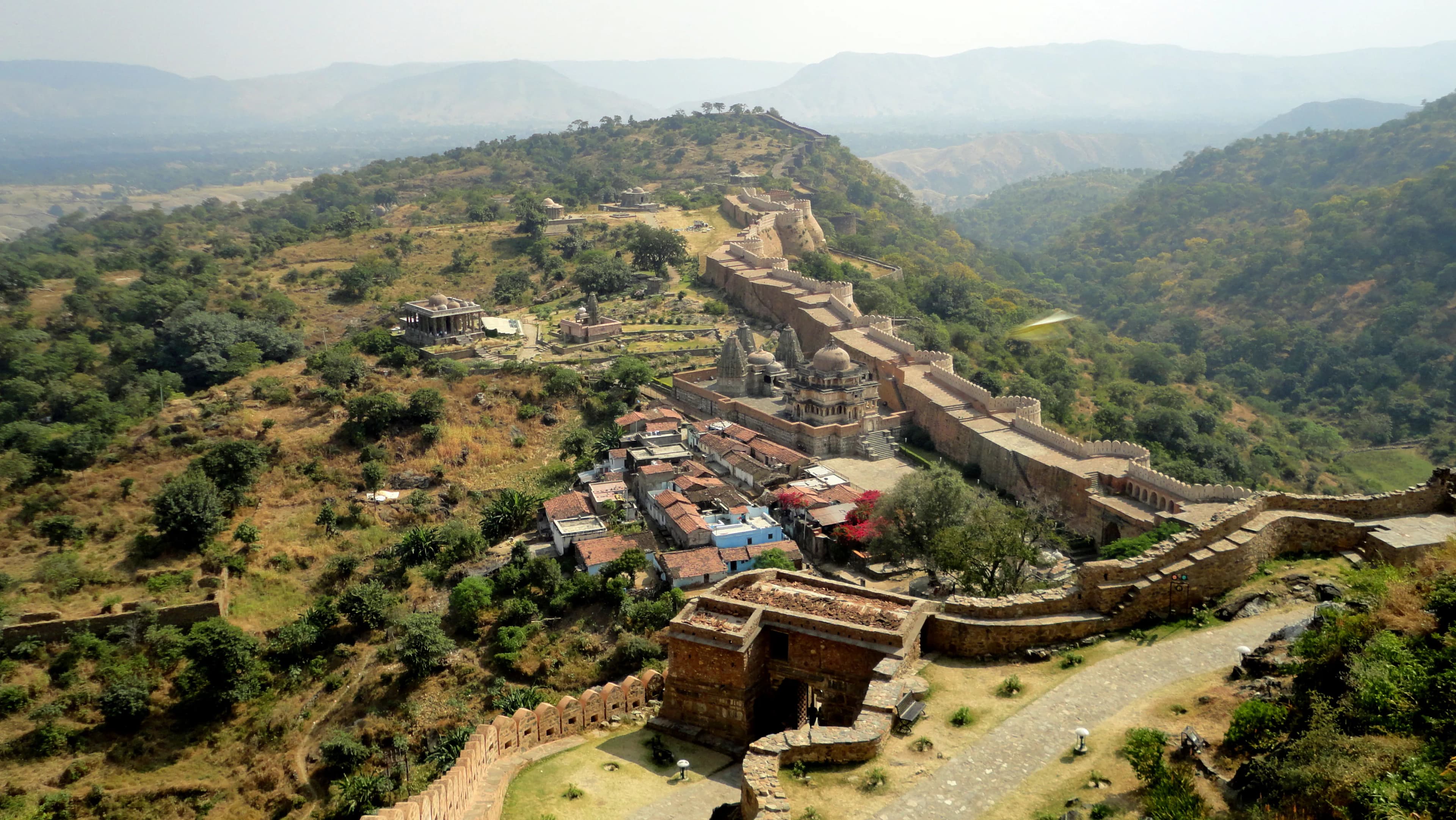
UNESCO
Featured
80% Documented
Kumbhalgarh, Rajsamand, Kumbhalgarh (313325), Rajasthan, India, Rajasthan
The wind whipped around me, carrying whispers of history as I stood atop Kumbhalgarh Fort, the formidable sentinel of the Aravalli range. Stretching as far as the eye could see, the ramparts snaked across the mountaintops, a testament to Rana Kumbha's ambition and the architectural prowess of the 15th century. They say the wall is so thick that eight horses could ride abreast along it – and having walked a section myself, I can readily believe it. The sheer scale is breathtaking. It's no wonder they call it the "Great Wall of India." My visit began at the main gate, Aret Pol, a sturdy structure bearing the scars of numerous sieges. The intricate carvings, though worn by time and weather, still spoke of a rich artistic tradition. Passing through the gate felt like stepping back in centuries, leaving the modern world behind. The climb to the top was steep, the sun beating down mercilessly, but the anticipation spurred me on. Within the fort's embrace lies a complex network of palaces, temples, and gardens. The Badal Mahal, or Cloud Palace, perched at the highest point, offered panoramic views of the surrounding landscape. From this vantage point, I could appreciate the strategic brilliance of the fort’s location. The undulating hills and dense forests would have provided ample warning of approaching armies, making Kumbhalgarh a near-impregnable fortress. The architecture within the fort is a fascinating blend of Rajput and Mughal influences. The jharokhas, or overhanging balconies, are exquisitely carved, offering glimpses of the intricate latticework within. I noticed the recurring motif of the sun and the lotus flower, symbols of power and purity respectively. The palaces, while grand, also possess a certain understated elegance. The use of local stone and the integration of the natural landscape into the design create a sense of harmony and balance. One of the most striking features of Kumbhalgarh is the sheer number of temples within its walls. From the small, almost hidden shrines to the larger, more elaborate structures, they represent a vibrant spiritual life that thrived within the fort's protective embrace. The Neelkanth Mahadev Temple, with its massive Shiva lingam, is particularly impressive. The intricate carvings on the pillars and ceilings are a testament to the skill of the artisans who worked on them. Beyond the grand palaces and temples, I was equally captivated by the smaller details: the worn steps leading to hidden chambers, the remnants of frescoes on the walls, the strategically placed water tanks that sustained life within the fort during sieges. These details offer a glimpse into the daily lives of the people who once inhabited this magnificent structure – the royalty, the soldiers, the artisans, and the common folk. My visit to Kumbhalgarh wasn't just about admiring the architecture and the breathtaking views. It was about connecting with the past, feeling the weight of history, and imagining the lives lived within these ancient walls. The echoes of battles fought, of celebrations held, of empires risen and fallen, seemed to permeate the very stones of the fort. As I descended, leaving the fort behind, I carried with me not just photographs and memories, but a deeper understanding of Rajasthan's rich and complex heritage. Kumbhalgarh is more than just a fort; it's a living testament to human ingenuity, resilience, and the enduring power of the past.
Fort
Rajput Period
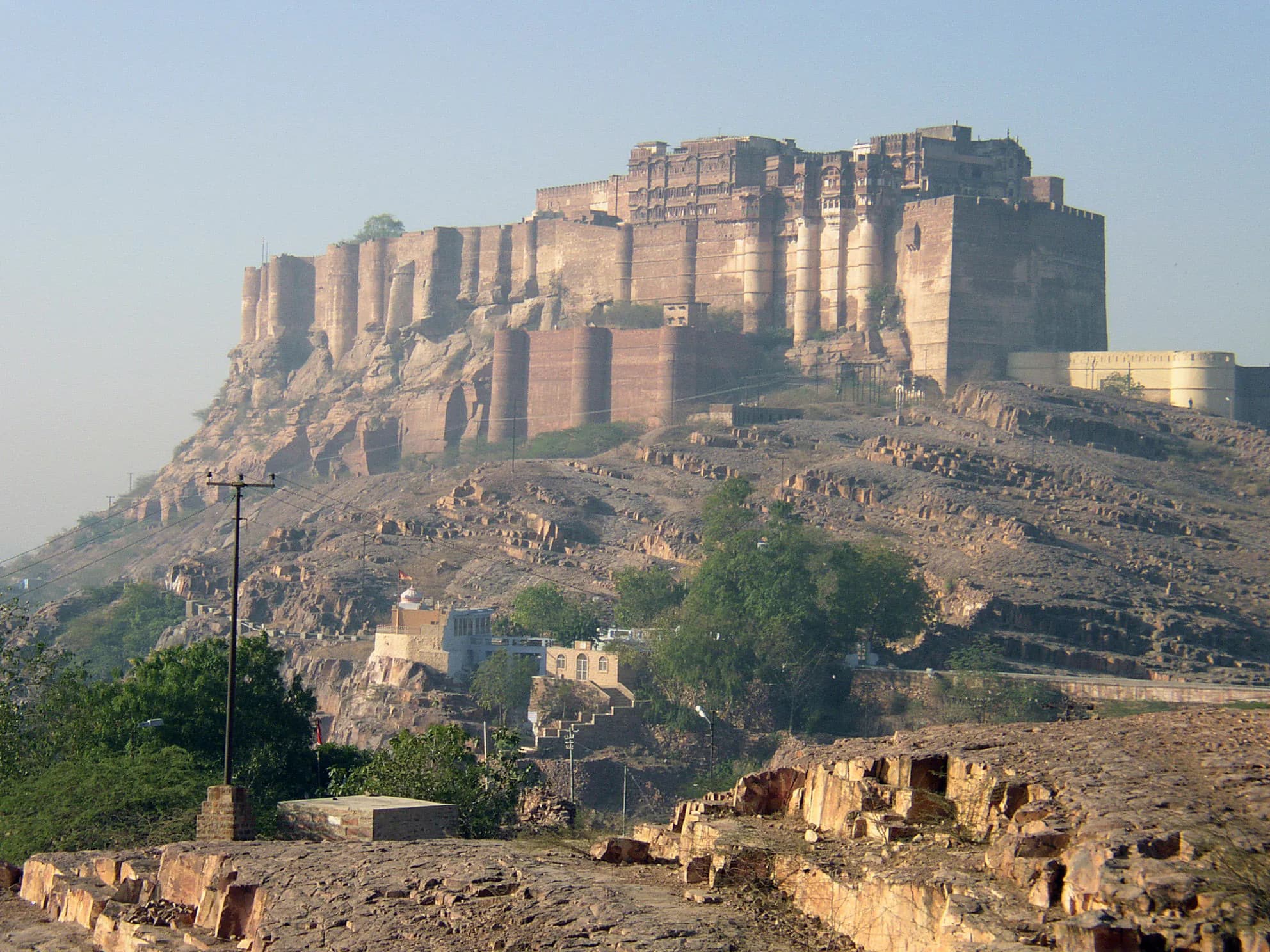
Featured
80% Documented
Fort Road, Jodhpur, Jodhpur (342006), Rajasthan, India, Rajasthan
The imposing silhouette of Mehrangarh Fort, perched atop a craggy cliff overlooking the blue-washed city of Jodhpur, is a sight that commands reverence. Having traversed the length and breadth of North India, exploring countless forts, I can confidently say that Mehrangarh stands in a league of its own. It isn't merely a fort; it's a living testament to Rajputana grandeur, a sandstone behemoth whispering tales of valour, artistry, and the passage of time. My ascent began through the imposing Jayapol gate, the "Gate of Victory," still bearing the scars of cannonball attacks – a visceral reminder of the fort's turbulent past. Each subsequent gate, Fatehpol, Dedh Kamgra Pol, and Loha Pol, narrated a different chapter of the fort's history, their intricate carvings and formidable structures showcasing the evolving architectural prowess of the Rathore dynasty. Stepping into the main courtyard, I was immediately struck by the sheer scale of the fort. The palaces within, Moti Mahal, Phool Mahal, Sheesh Mahal, each exuded a unique opulence. The intricate latticework of the jharokhas (balconies) in Moti Mahal, the "Pearl Palace," offered breathtaking views of the city sprawling below, a sea of blue houses punctuated by the occasional splash of vibrant colour. The Phool Mahal, with its delicate floral carvings and mirrored walls, was a testament to the refined aesthetic sensibilities of the royals, while the Sheesh Mahal, dazzling with its intricate mirror work, was a spectacle of light and reflection. What truly captivated me, however, was the fort's museum. It wasn't just a collection of artefacts; it was a curated journey through the lives of the Rathore rulers. The howdahs (elephant seats), intricately adorned with silver and gold, spoke of regal processions and hunting expeditions. The palanquins, delicate and ornate, offered a glimpse into the lives of the royal women. The armoury, a treasure trove of swords, shields, and guns, resonated with the echoes of battles fought and won. One particular exhibit, a letter penned by a queen to her husband on the battlefield, moved me deeply. It was a poignant reminder that behind the grandeur and the valour, there were human stories of love, loss, and longing. Beyond the palaces and the museum, it was the smaller details that truly brought Mehrangarh to life. The intricate carvings on the sandstone walls, the weathered textures of the ramparts, the strategically placed cannons – each element contributed to the fort's unique character. I spent hours exploring the ramparts, tracing the contours of the city below, imagining the lives of the soldiers who once patrolled these very walls. The view from the ramparts, especially at sunset, is simply unforgettable. The blue city transforms into a canvas of warm hues, the setting sun casting long shadows across the landscape. It's a moment of quiet contemplation, a chance to absorb the centuries of history etched into the very stones of Mehrangarh. Mehrangarh is more than just a fort; it's an experience. It's a journey through time, a testament to human ingenuity and artistry. It's a place where history whispers from every corner, where the grandeur of the past meets the vibrant pulse of the present. For anyone travelling through North India, Mehrangarh Fort is not just a must-see; it's an essential pilgrimage for the soul. It’s a place that stays with you long after you’ve left its imposing walls, a constant reminder of the enduring power of history and heritage.
Fort
Rajput Period
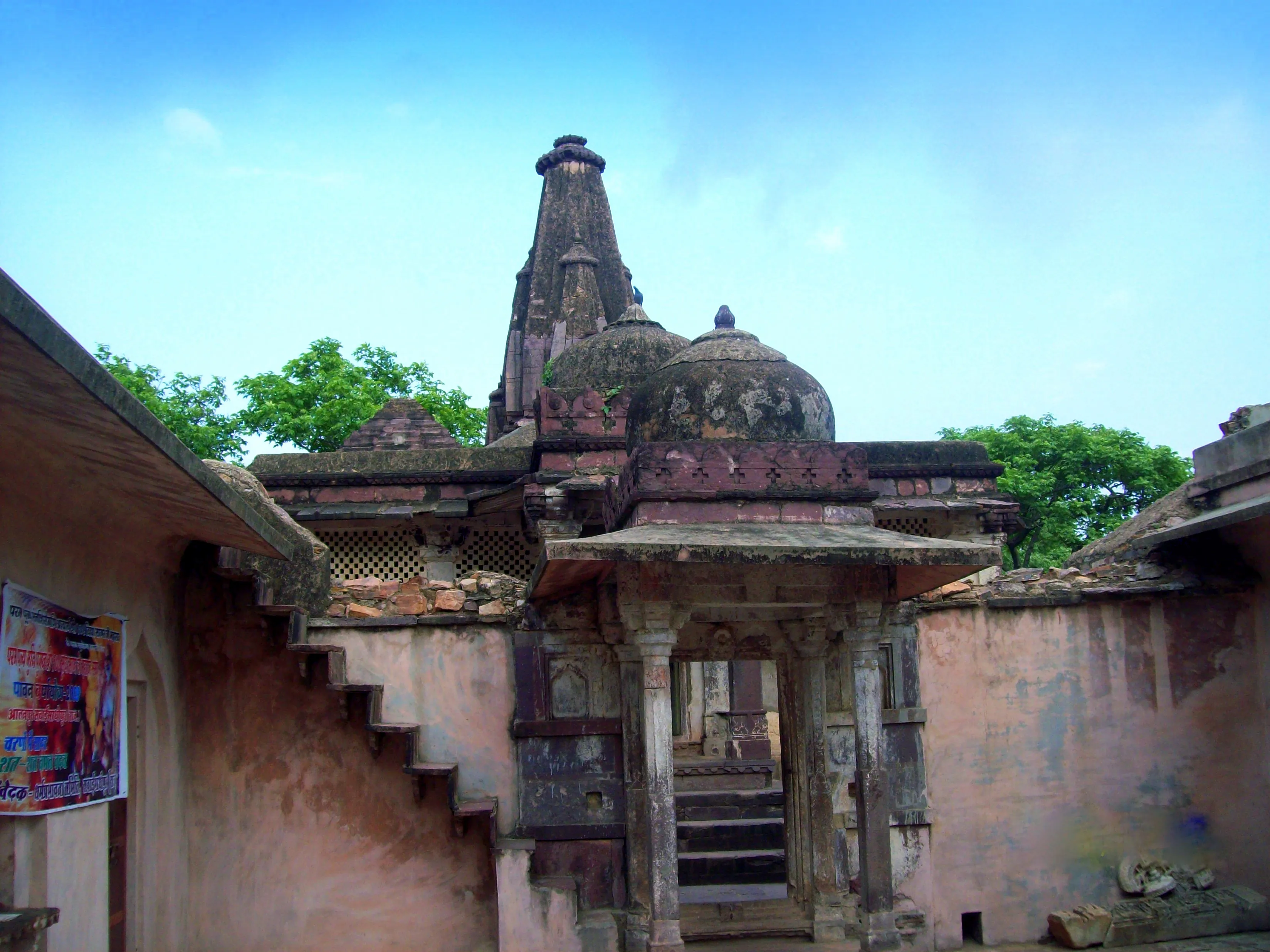
UNESCO
Featured
80% Documented
Ranthambore Fort, Sawai Madhopur, Sawai Madhopur (322001), Rajasthan, India, Rajasthan
The sun beat down on my neck, the dry Rajasthan air swirling around me as I climbed the steep, winding path towards Ranthambore Fort. Having explored countless forts across North India, I approached this one with a seasoned eye, yet the sheer scale and rugged beauty of Ranthambore immediately set it apart. Perched atop a massive, 700-foot-high rock formation within the Ranthambore National Park, the fort commands a breathtaking panorama of the surrounding landscape – a tapestry of dry deciduous forest, punctuated by the shimmering waters of Padam Talao. The initial ascent was a test of endurance, the uneven stone steps worn smooth by centuries of footfalls. But with every upward step, the anticipation grew, fueled by glimpses of the formidable ramparts rising against the azure sky. The fort, a UNESCO World Heritage Site, is a testament to Rajput valor and architectural ingenuity, its history etched into every stone. Built in the 10th century, it witnessed the ebb and flow of power, the rise and fall of dynasties, and the constant struggle for control of this strategic location. Passing through the imposing Ganesh Pol, the main entrance gate, I was struck by the stark contrast between the rugged exterior and the surprisingly intricate carvings that adorned the archways. The remnants of frescoes, though faded by time and the elements, hinted at a past grandeur. Within the fort walls, a complex network of palaces, temples, stepwells, and barracks unfolded, each structure whispering tales of a bygone era. The Badal Mahal, or Cloud Palace, with its delicate jalis (lattice screens) and remnants of vibrant murals, offered a glimpse into the opulent lifestyle of the royal inhabitants. The Hammir's Court, an open-air assembly area, evoked images of bustling courtly life, while the Jogi Mahal, situated near the second gate, exuded an air of quiet contemplation. One of the most striking features of Ranthambore Fort is its ingenious water harvesting system. The numerous stepwells, including the Rani-ki-Baori, are architectural marvels, showcasing the sophisticated understanding of water management possessed by the builders. Descending into the cool depths of these stepwells, I could almost feel the presence of those who had relied on these life-giving sources for centuries. The Trinetra Ganesh Temple, located within the fort, is a significant pilgrimage site. The temple, dedicated to Lord Ganesha, houses a unique idol with three eyes, and the air hummed with the quiet devotion of the pilgrims. The temple's vibrant colors and intricate carvings provided a welcome contrast to the muted tones of the fort's stone structures. From the ramparts, the view was simply mesmerizing. The vast expanse of the Ranthambore National Park stretched out before me, a haven for tigers, leopards, and other wildlife. I could see the ancient watchtowers, strategically placed along the fort walls, silent sentinels guarding the kingdom. The wind carried the distant calls of birds and the rustling of leaves, a reminder of the vibrant ecosystem that thrived beneath the fort's watchful gaze. My exploration of Ranthambore Fort was more than just a visit to a historical site; it was a journey through time. It was a humbling experience to stand amidst these ancient stones, to feel the weight of history, and to imagine the lives that had unfolded within these walls. Ranthambore Fort is not just a monument; it is a living testament to human resilience, ingenuity, and the enduring power of the past. It is a place that stays with you long after you’ve descended the winding path, its stories echoing in your mind.
Fort
Rajput Period
Related Collections
Discover more heritage sites with these related collections
Explore More Heritage
Explore our comprehensive archive of 7 fort with detailed documentation, 3D models, floor plans, and historical research. Each site page includes visitor information, conservation status, architectural analysis, and downloadable resources for students, researchers, and heritage enthusiasts.